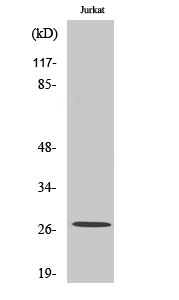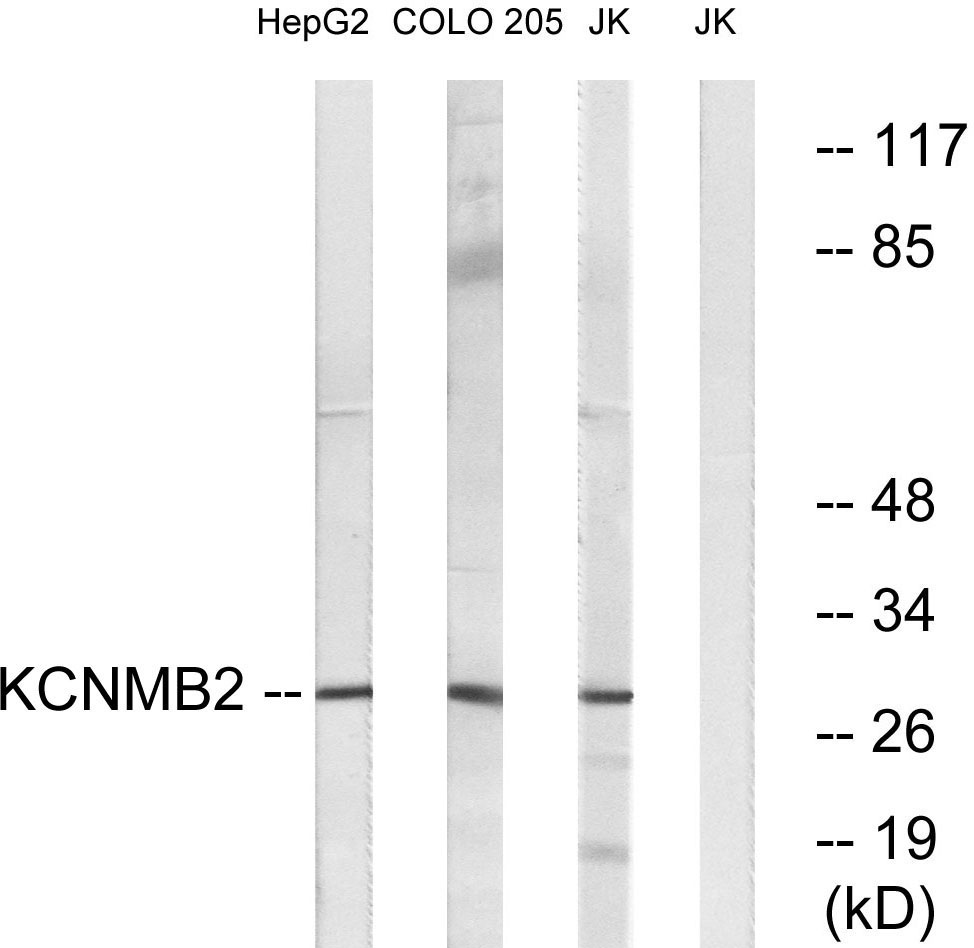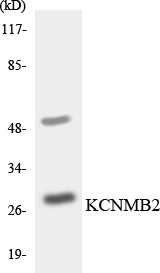MaxiKβ2 Polyclonal Antibody
- Catalog No.:YT2668
- Applications:WB;IHC;IF;ELISA
- Reactivity:Human;Mouse;Rat
- Target:
- MaxiKβ2
- Fields:
- >>cGMP-PKG signaling pathway;>>Vascular smooth muscle contraction;>>Insulin secretion
- Gene Name:
- KCNMB2
- Protein Name:
- Calcium-activated potassium channel subunit beta-2
- Human Gene Id:
- 10242
- Human Swiss Prot No:
- Q9Y691
- Mouse Gene Id:
- 72413
- Mouse Swiss Prot No:
- Q9CZM9
- Rat Gene Id:
- 294961
- Rat Swiss Prot No:
- Q811Q0
- Immunogen:
- The antiserum was produced against synthesized peptide derived from human KCNMB2. AA range:151-200
- Specificity:
- MaxiKβ2 Polyclonal Antibody detects endogenous levels of MaxiKβ2 protein.
- Formulation:
- Liquid in PBS containing 50% glycerol, 0.5% BSA and 0.02% sodium azide.
- Source:
- Polyclonal, Rabbit,IgG
- Dilution:
- WB 1:500 - 1:2000. IHC 1:100 - 1:300. ELISA: 1:20000.. IF 1:50-200
- Purification:
- The antibody was affinity-purified from rabbit antiserum by affinity-chromatography using epitope-specific immunogen.
- Concentration:
- 1 mg/ml
- Storage Stability:
- -15°C to -25°C/1 year(Do not lower than -25°C)
- Other Name:
- KCNMB2;Calcium-activated potassium channel subunit beta-2;BK channel subunit beta-2;BKbeta2;Hbeta2;Calcium-activated potassium channel; subfamily M subunit beta-2;Charybdotoxin receptor subunit beta-2;Hbeta3;K(VCA)beta-2;Maxi K cha
- Observed Band(KD):
- 30kD
- Background:
- MaxiK channels are large conductance, voltage and calcium-sensitive potassium channels which are fundamental to the control of smooth muscle tone and neuronal excitability. MaxiK channels can be formed by 2 subunits: the pore-forming alpha subunit and the modulatory beta subunit. The protein encoded by this gene is an auxiliary beta subunit which decreases the activation time of MaxiK alpha subunit currents. Alternative splicing results in multiple transcript variants of this gene. Additional variants are discussed in the literature, but their full length nature has not been described. [provided by RefSeq, Jul 2013],
- Function:
- domain:The ball and chain domain mediates the inactivation of KCNMA1. It occludes the conduction pathway of KCNMA1 channels, and comprises the pore-blocking ball domain (residues 1-17) and the chain domain (residues 20-45) linking it to the transmembrane segment. The ball domain is made up of a flexible N-terminus anchored at a well ordered loop-helix motif. The chain domain consists of a 4-turn helix with an unfolded linker at its C-terminus.,function:Regulatory subunit of the calcium activated potassium KCNMA1 (maxiK) channel. Modulates the calcium sensitivity and gating kinetics of KCNMA1, thereby contributing to KCNMA1 channel diversity. Acts as a negative regulator that confers rapid and complete inactivation of KCNMA1 channel complex. May participate in KCNMA1 inactivation in chromaffin cells of the adrenal gland or in hippocampal CA1 neurons.,PTM:N-glycosylated.,similarity:Belongs
- Subcellular Location:
- Membrane; Multi-pass membrane protein.
- Expression:
- Expressed in kidney, heart and brain. Highly expressed in ovary. Expressed at low level in other tissues.
- June 19-2018
- WESTERN IMMUNOBLOTTING PROTOCOL
- June 19-2018
- IMMUNOHISTOCHEMISTRY-PARAFFIN PROTOCOL
- June 19-2018
- IMMUNOFLUORESCENCE PROTOCOL
- September 08-2020
- FLOW-CYTOMEYRT-PROTOCOL
- May 20-2022
- Cell-Based ELISA│解您多样本WB检测之困扰
- July 13-2018
- CELL-BASED-ELISA-PROTOCOL-FOR-ACETYL-PROTEIN
- July 13-2018
- CELL-BASED-ELISA-PROTOCOL-FOR-PHOSPHO-PROTEIN
- July 13-2018
- Antibody-FAQs
- Products Images

- Western Blot analysis of various cells using MaxiKβ2 Polyclonal Antibody diluted at 1:500

- Western blot analysis of lysates from Jurkat, COLO, and HepG2 cells, using KCNMB2 Antibody. The lane on the right is blocked with the synthesized peptide.

- Western blot analysis of the lysates from HepG2 cells using KCNMB2 antibody.



